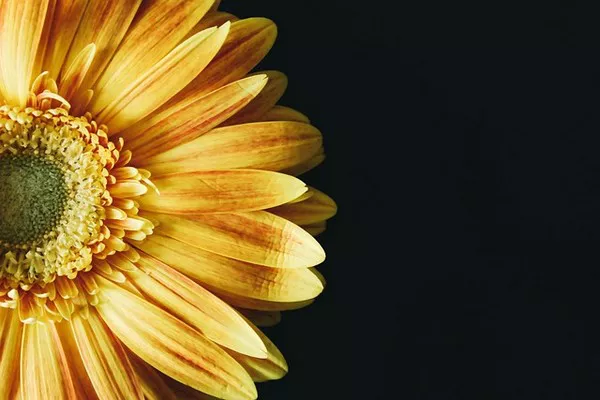Sunflowers (Helianthus annuus) have long been admired for their radiant beauty and symbolism of hope and optimism. These towering blooms, with their vibrant golden petals and robust stems, have inspired poets, artists, and gardeners for centuries. Yet, their journey from tiny seeds to magnificent sunflowers begins with a humble and often overlooked stage: the sprout. In this article, we will take a closer look at what a sunflower sprout looks like, exploring its characteristics, growth process, and significance in the grand scheme of sunflower life.
The Birth of a Sunflower Sprout
The journey of a sunflower begins with a small, unassuming seed. These seeds are typically oval-shaped and flattened, with a brown or black outer shell. Inside, the seed harbors all the genetic information necessary for the development of a sunflower plant. When conditions are right, a remarkable transformation takes place.
Characteristics of a Sunflower Sprout
Emergence from the Seed: The first sign of a sunflower sprout is the emergence of a tiny green shoot from the seed. This shoot, called the cotyledon, is the first leaf-like structure that becomes visible as it pushes through the soil’s surface. At this stage, it is typically pale green, delicate, and slightly curved, resembling a miniature hook.
Cotyledon Leaves: The cotyledon leaves are the initial leaves that provide nourishment to the growing seedling. They appear rounded and heart-shaped, with a smooth texture and a light green color. These leaves serve as temporary food storage, supplying nutrients to the young plant until it can produce its own through photosynthesis.
True Leaves: As the sunflower sprout continues to grow, it will produce its first set of true leaves. These leaves differ in appearance from the cotyledons and are often more elongated and serrated along the edges. The true leaves are where photosynthesis primarily occurs, allowing the plant to generate its own energy from sunlight.
Stem and Growth: The stem of a sunflower sprout is slender and fragile in its early stages. However, as it grows, it becomes sturdier and thicker, providing essential support for the developing plant. The stem will gradually elongate, lifting the leaves higher toward the sun’s rays.
Roots: Beneath the soil’s surface, an intricate network of roots is developing to anchor the sunflower and absorb water and nutrients. These roots are typically white or light tan in color and grow in a branching pattern, spreading out to explore the surrounding soil.
Phototropism: Sunflowers exhibit a fascinating behavior known as phototropism, which is particularly evident in sunflower sprouts. This means that the young plant actively follows the movement of the sun across the sky. During the day, the sunflower sprout will lean toward the sun, ensuring that its leaves receive maximum sunlight for photosynthesis.
Environmental Factors Influencing Sunflower Sprout Appearance
Several environmental factors can influence the appearance and growth of sunflower sprouts:
Light: Adequate sunlight is crucial for sunflower sprouts to develop into healthy plants. A lack of sunlight can result in elongated, weak stems and pale, spindly leaves as the plant reaches for light.
Soil Quality: The quality of the soil, including its nutrient content and drainage capabilities, plays a significant role in determining the appearance of sunflower sprouts. Well-draining, nutrient-rich soil supports robust growth.
Temperature: Sunflower sprouts thrive in warm temperatures. Cooler temperatures may slow down growth, while frost can damage or kill young sprouts.
Watering: Proper watering is essential to prevent both underhydration and overhydration. Consistent moisture is necessary, but waterlogged soil can lead to root rot and stunted growth.
Spacing: Planting sunflower seeds at the appropriate distance ensures that each sprout has enough space to develop fully. Crowded seedlings may compete for resources and exhibit stunted growth.
Significance of Sunflower Sprouts
Sunflower sprouts play a vital role in the life cycle of sunflowers and hold several ecological and symbolic significances:
Nutrient Source: Sunflower sprouts provide essential nutrients to the young plant, allowing it to establish itself and grow into a mature sunflower.
Ecological Role: Sunflower sprouts, like all plants, contribute to the ecosystem by releasing oxygen, sequestering carbon dioxide, and providing habitat and food for various insects and animals.
Symbolism: Sunflowers are rich in symbolism, often representing positivity, happiness, and longevity. The sprout stage can be seen as a symbol of new beginnings and growth, making it a popular choice for metaphors in literature and art.
Conclusion
The beauty of a sunflower’s life journey lies not only in the grandeur of its fully bloomed flower but also in the humble beginnings of its sprout. A sunflower sprout is a testament to the marvels of nature, with its delicate cotyledon leaves, slender stem, and intricate root system. Understanding the appearance and growth of sunflower sprouts provides us with a deeper appreciation of the entire sunflower life cycle.
As we witness the emergence of a sunflower sprout from a tiny seed, we are reminded of the potential for growth and transformation that exists within even the most unassuming beginnings. This simple sprout represents hope, optimism, and the promise of a brighter future, much like the sunflowers that grace our gardens and fields with their radiant beauty. So, the next time you encounter a sunflower sprout, take a moment to marvel at its intricate design and the incredible journey that awaits it.


